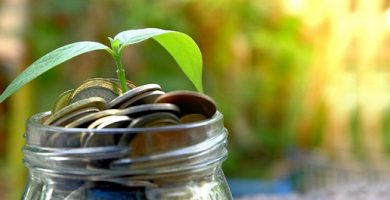What is the plasma membrane?
We explain what the plasma membrane is and how its structure is. In addition, the main functions of this lipid layer.
-
What is the plasma membrane?
It is called plasma membrane, cell membrane, plasmalema or cytoplasmic membrane to a double layer of lipids that covers and delimits the cells , serving as a border between the inside and outside of it, and also allowing a physicochemical balance between the environment and cytoplasm mobile.
The plasma membrane is not visible under an optical microscope (yes under an electronic microscope ), since it has an average thickness of 7.3 cubic nanometers . In plant and fungal cells, said membrane is located below the cell wall.
Selective permeability is the main characteristic of the plasma membrane , that is, its ability to allow or reject the entry of certain molecules into the cell, thus regulating the passage of water, nutrients or ionic salts, and keeping the cytoplasm always in optimal conditions as far as electrochemical potential (negatively charged), pH or concentration is concerned.
The latter occurs through two elementary processes of absorption (or endocytosis ) or expulsion (or exocytosis ) of cellular substances, also being able to release to the environment metabolic waste materials , fruit of cellular respiration. For this, small vesicles are formed in the plasma membrane serve as a means of cell transport.
An important dynamic in the case of unicellular cells or organisms that use their membrane to wrap (or phagocyte r ) nutrients or prey, or to expel from a multicellular organism those harmful agents (as do lymphocytes or white blood cells).
-
Plasma membrane structure

The plasma membrane is composed of two layers of lipids, which orient their hydrophilic polar heads (i.e., which have affinity for water) into the cell, keeping their hydrophobic parts (which reject water) in contact, in the manner of a sandwich. These lipids are primarily cholesterol, phosphoglycerides and sphingolipids.
At the same time it has about 20% of proteins , which fulfill functions of connection, transport and catalysis: various forms of biochemical communication and cellular transport of nutrients and wastes. The membrane also has several carbohydrates (sugars), in its outermost part, serving as support material and intercellular identification. Said sugars represent only 8% dry of the total membrane weight.
-
Plasma membrane function

The plasma membrane has a different series of functions, such as:
- Delimit r the cell . Define and protect the cell from its environment, separating the outside from the inside and one cell from another (in the case of cell tissues). It is the first defense barrier in case of invading agents, such as viruses .
- Manages tion of nutrients . The selectivity of the membrane gives way to desired substances and denies them to unwanted ones, serving as a filter and transport between outside and inside, as it also allows the disposal of toxins and metabolic wastes (such as CO2 ).
- Preservation of life . By exchanging fluids and substances between the cytoplasm and the environment, the plasma membrane seeks to keep the concentration of water and other substances in the cytoplasm stable. This also implies maintaining its pH level and electrochemical charge.
- Communication cell . Given certain stimuli from outside the cell, the plasma membrane is capable of reacting, transmitting information inside the cell and starting certain biochemical processes: cell division, cell movement or segregation of biochemical substances.
- Scroll cell . In some cases the cell membrane lengthens and allows the appearance of flagella (tails) or cilia (hairs) that allow the cell to physically move





